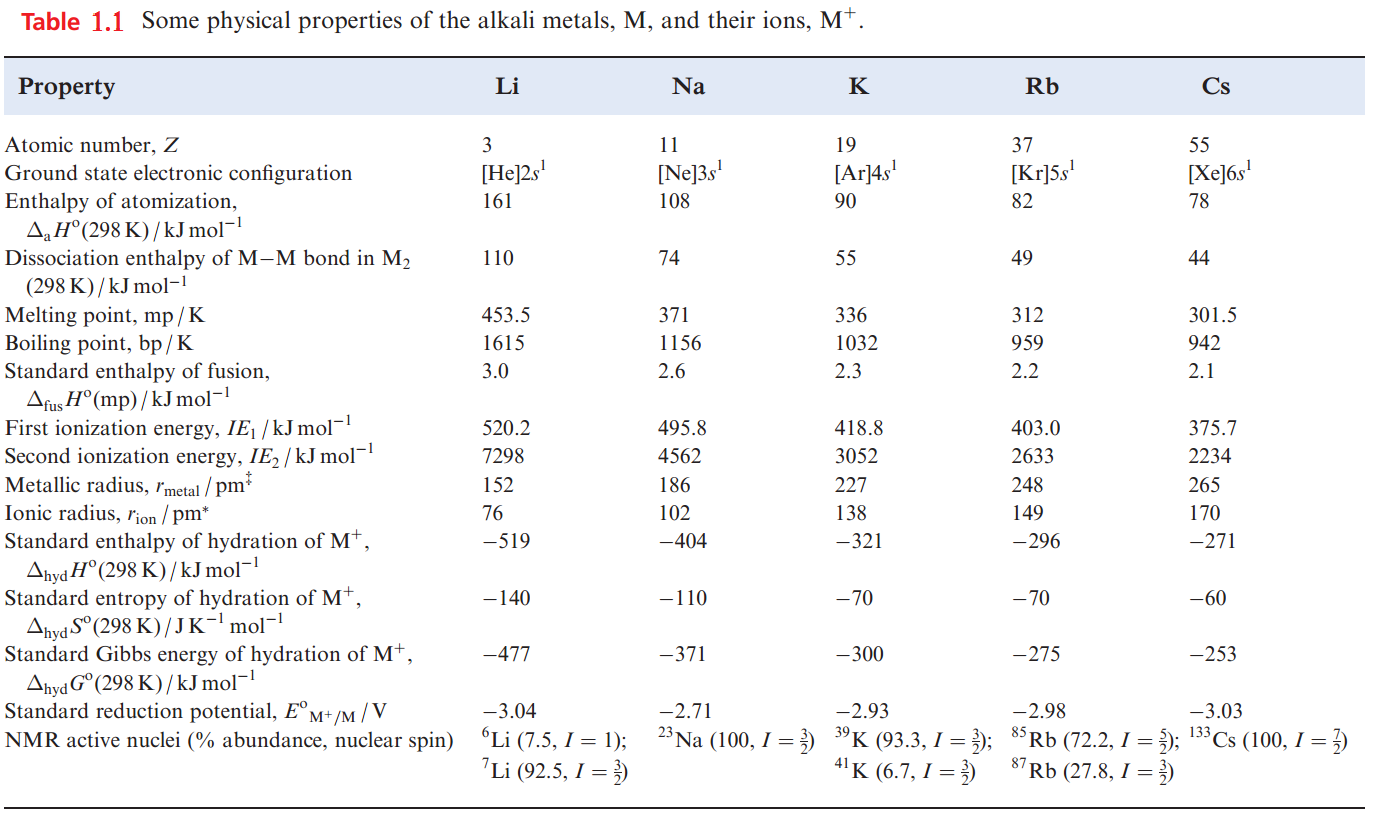


 علم الكيمياء
علم الكيمياء 
 الكيمياء التحليلية
الكيمياء التحليلية 
 الكيمياء الحياتية
الكيمياء الحياتية 
 الكيمياء العضوية
الكيمياء العضوية 
 الكيمياء الفيزيائية
الكيمياء الفيزيائية
 الكيمياء اللاعضوية
الكيمياء اللاعضوية 
 مواضيع اخرى في الكيمياء
مواضيع اخرى في الكيمياء
 الكيمياء الصناعية
الكيمياء الصناعية |
Read More
Date: 20-12-2018
Date: 13-11-2018
Date: 12-3-2017
|
Complex ions of group 1 metals
Unlike simple inorganic ligands, polyethers and, in particular, cyclic polyethers complex alkali metal ions quite strongly. The crown ethers are cyclic ethers which include 1,4,7,10,13,16-hexaoxacyclooctadecane (Figure 1.1a), the common name for which is 18-crown-6; this nomenclature gives the total number (C + O) and number of O atoms in the ring. Figure 1.1b shows the structure of the [K(18- crown-6)]+ cation; the K ion is coordinated by the six Odonors.

The radius of the cavity† inside the 18-crown-6 ring is 140 pm, and this compares with values of rion for the alkali metal ions ranging from 76pm for Li to 170pm for Cs (Table 1.1).

The radius of the K ion (138 pm) is well matched to that of the macrocycle, and stability constants for the formation of [M(18-crown-6)] in acetone follow the sequence K+> Rb+> Cs+ ≈ Na+> Li+.

Different crown ethers have different cavity sizes, although the latter is not a fixed property because of the ability of the ligand to change conformation. Thus, the radii of the holes in 18-crown-6, 15-crown-5 and 12-crown-4 can be taken to be roughly 140, 90 and 60pm respectively. It is, however, dangerous to assume that an [ML]+ complex will fail to form simply because the size of M+ is not matched correctly to the hole size of the macrocyclic ligand L. For example, if the radius of M+ is slightly larger than the radius of L, a complex may form in which M+ sits above the plane containing the donor atoms, e.g. [Li(12-crown-4)Cl] .
Alternatively a 1 :2 complex [ML2] + may result in which the metal ion is sandwiched between two ligands, e.g. [Li(12-crown-4)2] +. Note that these latter examples refer to complexes crystallized from solution.



|
|
|
|
مخاطر عدم علاج ارتفاع ضغط الدم
|
|
|
|
|
|
|
أكثر 5 ماركات سيارات تعاني من مشاكل في المحرك في 2024
|
|
|
|
|
|
|
مدرسة دار العلم.. صرح علميّ متميز في كربلاء لنشر علوم أهل البيت (عليهم السلام)
|
|
|